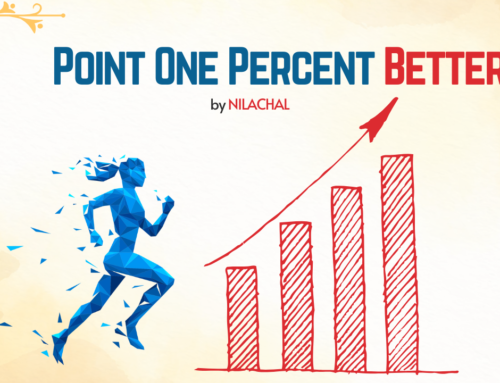Amla is the most common holistic drug used and known today. Most of us have used it in one or the other way. Amla is the most nutritional fruit and a very strong antioxidant. It is rich in Vitamin C, Vitamin E and fiber. It is used both as a dietary supplements and medicines applied on body.
Most commonly also known as Indian gooseberry, amalaki (Sanskrit name) is a deciduous tree of the family Phyllanthaceae and the fruit is called Emblica Officinalis (Phyllanthus emblica) scientifically.
Religious Importance
Apart from ayurvedic perspective, it has religious importance as well. Amla is worshipped on Amalaki Ekadashi (i.e., the 11th day of the waxing moon, in the lunar month of Phalgun) according to Hindu culture. This is the time between the months of February-March. It is believed that Lord Vishnu lives in it. This is the reason amla is considered sacred by Hindus. According to Vishnu puran, amla tree germinated from the tears of lord Vishnu when he saw the whole world was immersed under water. Also, there are many storiesdescribing the importance of amla and Amalaki Ekadashi. According to Padma Purana, one attains salvation as equal to visiting pilgrimages or conducting yagya by fasting on Amalaki Ekadashi. According to the scriptures, consuming Amla is considered to be very beneficial on Amalaki Ekadashi.
The importance of amla was known to the ancient rishis and therefore, they linked it with religious ceremonies for the holistic wellbeing of the people of society. Holistic health, therefore, was primary objective of the ancient sages as amla not only helps to maintain physical health but consuming amla also improves mental health. Also, gathering together on Amalki Ekadashi strengthens the social bond and hence, increases social health. As the whole practice is aimed for divinity and righteousness, spiritual health is cultivated.
Modern Significance
In today’s time, when scientific evidence is the basis of acceptence of anything it is scientifically proved by many researches that amla is a holistic drug.
100 grams of raw Amla (Indian Gooseberry) contains 478 mg vitamin C and 5 grams of fiber content. The following values are approximate values, which may differ according to variety, season and type of Indian Gooseberry. The percentage of recommended daily allowance is based on 2000 calories per day.
Vitamin C content also varies from 440 mg/100g to 800 mg/100g. We have listed most acceptable values according to our analysis report.
Major Nutrients
| Major Nutrient | Value per 100 g | % of RDA |
| Total Calories | 48 | 2.4% |
| Total Fat | 0.5 g | 0.5% |
| Protein | 1 g | – |
| Total Carbohydrate | 10 g | 3% |
| Water | 86 g | – |
| Phenolic Compounds Gallic Acid | 3012.5 mg | NA |
Carbohydrates
| Carbohydrates | Value per 100 g | % of RDA |
| Total Carbohydrates | 10 g | 3% |
| Dietary Fiber | 5 g | 18% |
| Sugar | – | – |
| Starch | – | – |
Fat, Lipids & Fatty Acids
| Lipids | Value per 100 g | % of RDA |
| Total Fat | 0.5 g | 1% |
| Saturated fat | Nil | – |
| Monounsaturated fat | 0.1 g | – |
| Polyunsaturated fat | 0.3 g | – |
| Cholesterol | Nil | – |
| Trans fat | Nil | – |
| Omega-3 fatty acids | 48 mg | – |
| Omega-6 fatty acids | 276 mg | – |
Vitamins
| Vitamins | Value per 100 g | % of RDA |
| Vitamin A, IU | 290 IU | 6% |
| Vitamin C | 478 mg | 800% |
| Vitamin D | – | – |
| Vitamin E (alpha-tocopherol) | 0.16 ± 0.05 mg | – |
| Vitamin K | – | – |
| Thiamin | – | 3% |
| Riboflavin | – | 2% |
| Niacin | 0.3 mg | 1% |
| Vitamin B6 | 0.1 mg | 4% |
| Folate | 6 mcg | 1% |
| Vitamin B12 | – | – |
| Pantothenic Acid | 0.3 mg | 3% |
| Choline | – | – |
| Betaine | – | – |
Note: A study reported 100 grams Amla fruit pulp (wet weight) contains 575±452mg/100g vitamin C content. Vitamin E was detected up to 0.16 ± 0.05 mg per 100 grams.
Minerals
| Minerals | Value per 100 g | % of RDA |
| Calcium, Ca | 25 mg (42+/-12 mg) | 3% |
| Iron, Fe | 0.9 mg (0.16+/-0.04 mg) | 6% |
| Magnesium, Mg | 10 mg (13+/-2 mg) | 2% |
| Phosphorus, P | 21+/-5 mg | 3% |
| Potassium, K | 198 mg (151+/-37 mg) | 6% |
| Sodium, Na | 13+/-4 mg | 0% |
| Zinc, Zn | 0.12 mg (0.14+/-0.08 mg) | 1% |
| Copper, Cu | 0.1 mg (0.04+/-0.03 mg) | 4% |
| Manganese | 0.1 mg (0.71+/-0.06 mg) | 7% |
| Selenium | 0.6 mcg | 1% |
| Chloride | 25.6+/-2.3 mg | – |
Other Compounds
| Compounds | 100 grams wet weight contains: |
| Quercetin | 2.6+/-1.6 mg |
| β-sitosterol | 12.12+/-1.90 mg |
| stigmasterol | 0.70+/-0.21 mg |
| Carotenoids | 49+/-27 mg |
| β-carotene | 32+/-19 mg |







Leave A Comment